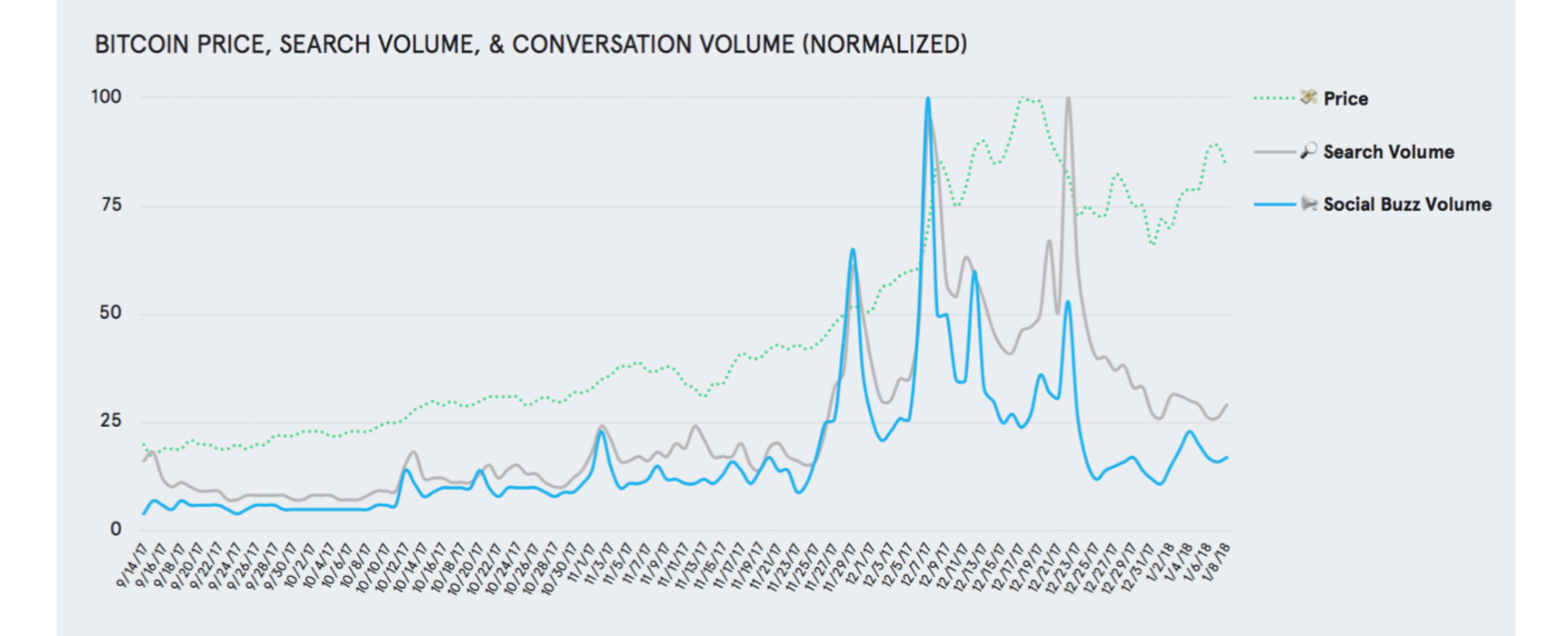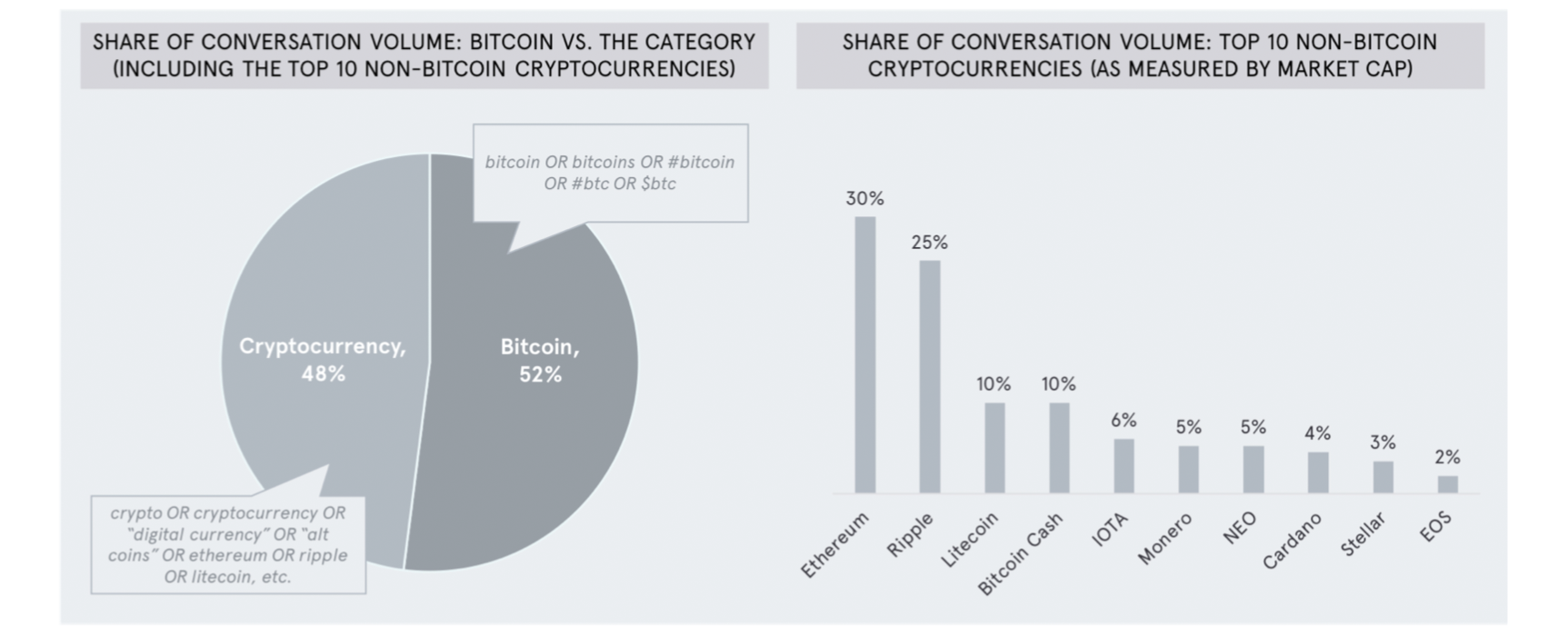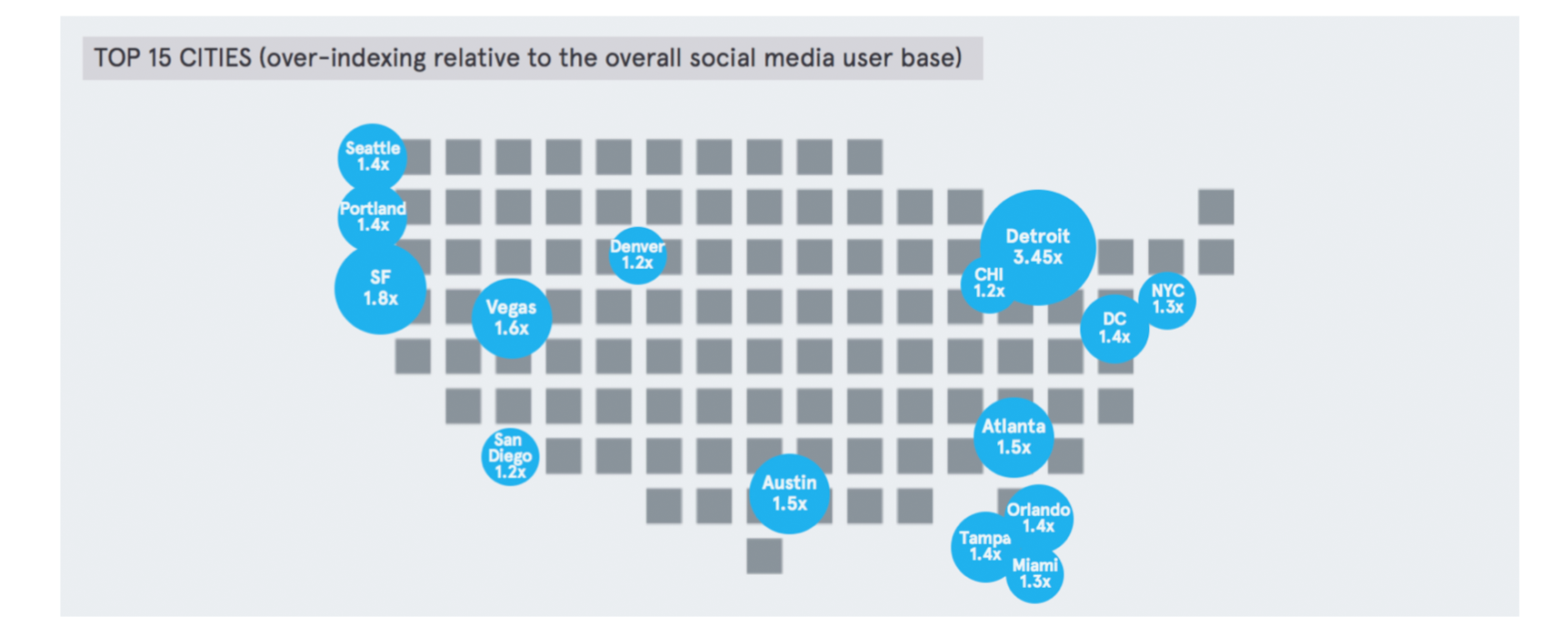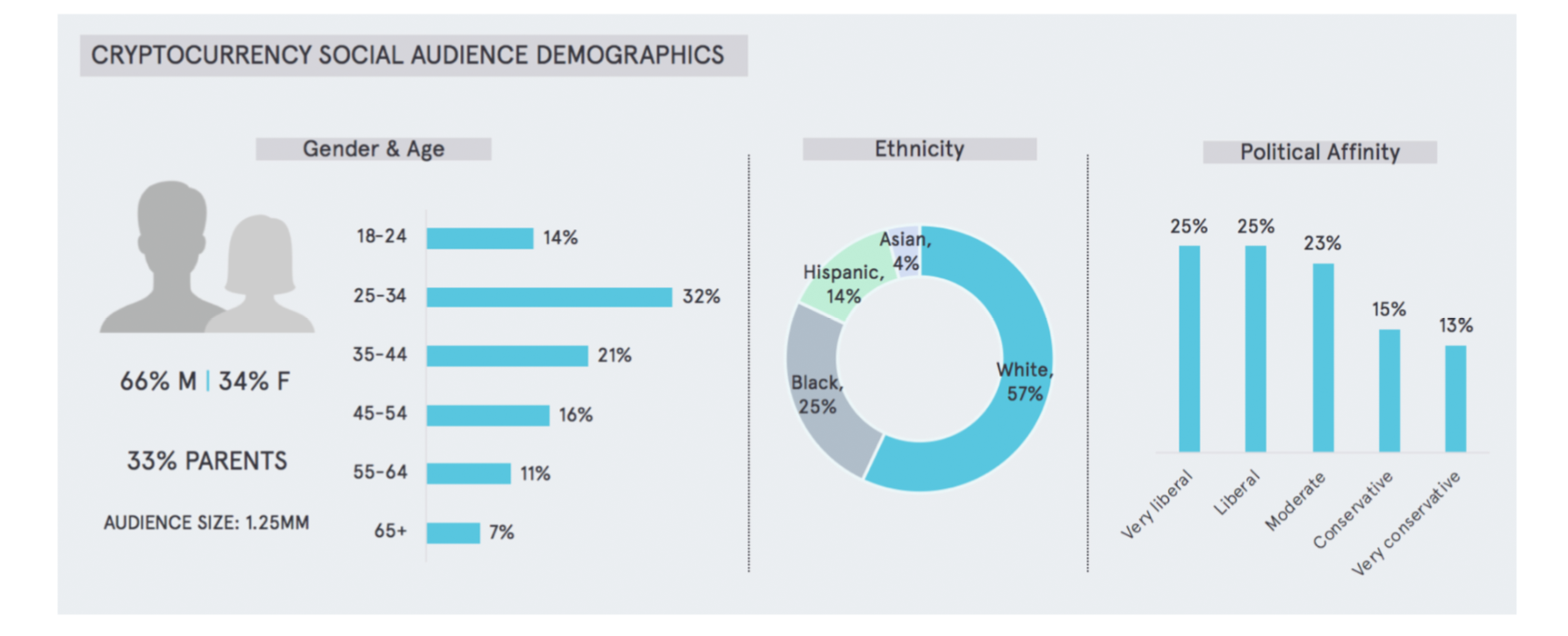
Just recently the audience intelligence company, Pulsar, published a report examining the mainstream adoption of cryptocurrencies. Rather than measure interest using prices, trade volume, and market capitalization the comprehensive study analyzed data using over 5 million mentions across social media September 14, 2017 – January 8, 2018.
Also Read: Coinbase Reveals ‘Overhauled’ Changes and Tax Tools
Social Media Buzz Consistently Stirs Cryptocurrency Prices
In order to study cryptocurrency adoption, the analytical intelligence firm Pulsar has researched the subject in a different way by utilizing mentions across social media platforms. In addition to the data provided by Pulsar researchers also used other sources such as Audiense, and Google search data. The report is based on 5 million U.S. English-language cryptocurrency mentions throughout a variety of platforms. One particularly interesting finding, revealed by ‘over-indexing,’ shows that quite a bit of cryptocurrency conversations are stemming from coastal regions like New York and Washington, DC.

As far as the price of certain digital assets is concerned, patterns in social media suggest “signals” can be seen that indicate upcoming price movements. According to Pulsar, the phenomenon works both ways whether the price is sliding downwards in value or rising.
“Spikes in conversation volume often precede spikes in search volume by one full day, and new price highs for Bitcoin by one to three days,” explains the report.
In nearly every case, a rise of 10% or more in social cryptocurrency buzz volume from one day to the next ‘predicts’ a rise of at least 5% in the price of Bitcoin within three days time.
Men, Women, and Brand Names
Moreover in contrast to traditional markets, cryptocurrency trading operates 24 hours a day, seven days a week. Pulsar reports that ‘social media buzz’ consistently spikes during the evenings and towards the end of the week. Further cryptocurrency ‘brand names’ are very prevalent where the top ten digital assets are mentioned across social media far more than generic terms like “cryptocurrencies, and digital assets.” Pulsar researchers state that digital currency enthusiasts like to latch on to brand names as some of them may “symbolize certain values.” The brand ‘bitcoin’ dominates the mentions but other names like ‘ethereum’ and ‘ripple’ are very noticeable in online conversations as well.

Pulsar researchers also detail the demographics of the people behind social media mentions and their locations. According to the report, most of the online discussions revolving around digital currencies comes from a “young male, and tech-driven” audience. While the majority of social media mentions stem from men cryptocurrency conversations coming from women is growing. “Over 425,000 women have posted about cryptocurrency in the last five months,” says Pulsar researchers.
One of the only visible changes is a very slight decrease in the share of women in the audience; women were more vocal toward the end of 2017, as the price of Bitcoin was sharply ascending to $19K.
Detroit City Loves Crypto
Furthermore, the data revealed information on geographical locations which provided insight on where cryptocurrency mentions are deriving from. Most of the locations are major-tech driven markets and a few outliers. Cities include New York, Denver, Austin, Atlanta, Miami, Seattle, and San Francisco.

In addition to these cities, an interesting outlier had shown that the economically challenged city of Detroit is booming with cryptocurrency discussions. News.Bitcoin.com recently reported on the influx of bitcoin automated teller machines (ATM) in Detroit and the Pulsar report confirms the Michigan city is frothing with crypto-activity.
“The most interesting outlier is the Detroit audience, which plays a much bigger role in cryptocurrency conversation than it does in social media conversation generally,” Pulsar’s report explains.
One theory is that the city’s turbulent economic history may play a role here, pushing a relatively high portion of the population toward a crypto mentality – one where the people are less reliant on banking trust, government bailouts, etc.
The ‘Tipping Point’ Is Just Starting
Lastly, the report details that many mainstream audiences still are asking “What is bitcoin?” across social media channels. The study says the metric holds true for all age groups but 35-44 year-olds have the hardest time understanding the technology. 25-34 year-olds are the ones with the most knowledge, and 45-55 year-olds usually question bitcoin’s legitimacy.
The report states that even though bitcoin has existed since 2009 the data collected indicates that cryptocurrencies just hit a “tipping point” in late 2017. Pulsar says that 2015 started to show the first signs of large amounts of cryptocurrency social media buzz. This means either we are three years into cryptocurrencies mainstream “breakout” or just a few months.
What do you think about Pulsar’s report and the data they collected? Do you find metrics like these interesting? Let us know your thoughts in the comments below.
Source and images: Pulsar and Twin Design, and Shutterstock.
At Bitcoin.com there’s a bunch of free helpful services. For instance, have you seen our Tools page? You can even lookup the exchange rate for a transaction in the past. Or calculate the value of your current holdings. Or create a paper wallet. And much more.
The post Data Company Tracks Crypto-Adoption Using Social Media appeared first on Bitcoin News.
Powered by WPeMatico

